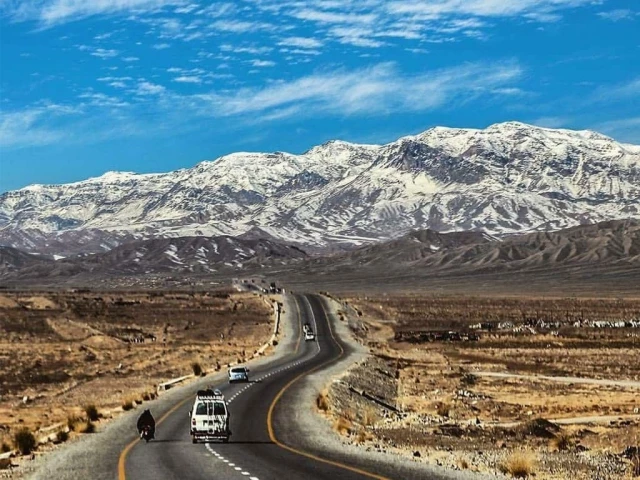Deep gaps revealed in housing, livelihoods, health and education, despite higher provincial incomes
ISLAMABAD:
The government on Monday unveiled an “eye-opening” report revealing that human development was mainly focused on Punjab, which has no districts classified as most vulnerable, unlike Balochistan and Khyber-Pakhtunkhwa, the provinces facing the highest levels of vulnerability and unemployment.
The report’s findings highlight that there was an urgent need to transfer financial resources directly to districts, as the current arrangement of strong control of provincial capitals over resources increased the share of the vulnerable population.
Finance Minister Muhammad Aurangzeb and Climate Change Minister Dr Musadaq Malik launched the UK-funded District Vulnerability Index of Pakistan (DVIP). The report found that most of the districts belonging to the highest vulnerability quintile are in Balochistan, while the least vulnerable are in Punjab.
The findings call into question the use of trillions of rupees in additional financial resources given to provinces under the Seventh National Finance Commission (NFC). All provinces are cash rich and invest their excess cash in federal government debt instead of spending it on their people.
The report is based on six distinct areas: housing, communication, transport, livelihoods, access to health services, access to education and demographics. The index, developed by the Pakistan Population Council, measures the exposure of Pakistan’s districts to social, economic and environmental risks.
Even the highest-performing districts, the report notes, reveal systemic weaknesses nationwide. Dr Malik said nearly 10 million, or 11.3% of Pakistanis, live in the 20 most vulnerable districts. About 2 million of them are women of childbearing age and a similar number are children under 5 years old. More than half of the most vulnerable population resides in Balochistan, more than 40% of the province’s population.
The comprehensive study aims to fill the gaps by developing an index that incorporates areas of vulnerability that are typically underestimated in analysis in Pakistan. The index builds on established social vulnerability indices, adapting their frameworks to the district context of Pakistan.
Among the 20 least vulnerable districts, 13 are in Punjab, four in Sindh, two in KP and none in Balochistan. In contrast, the most vulnerable category includes two former FATA districts in KP, only one in Sindh, none in Punjab and, alarmingly, 17 in Balochistan.
“With a population growth rate of 2.55%, the highest in the region, pressure is mounting on all stakeholders to take decisive action,” said Dr Imtiaz Ahamd, Pakistan’s chief economist. He said the least vulnerable districts are those connected by infrastructure to the rest of the country.
The five least vulnerable districts in the country are the four urban districts of Karachi, followed by Lahore. But the five most vulnerable districts are Washuk, Khuzdar, Kohlu and Zohb in Balochistan and Kohistan in KP.
The most vulnerable districts are: Washuk, Khuzdar, Kohistan, Zhob, Kohlu, Musakhel, Dera Bugti, Killa Saifullah, Kalat, Tharparkar, Seerani, Jhal Magsi, Nasirabad, Chagai, Barkhan, Harani, Awaran, Kharan, North Waziristan and Panjgur.
“Even the best districts do not have a good reputation and the worst is that 17 of the 20 most vulnerable districts are in Balochistan,” Dr Malik said.
Housing estate is based on indicators of the percentage of mud houses, no toilets, poor sources of drinking water and one-room houses. In the 20 worst-performing housing districts, more than 65% of the population lives in makeshift structures, half do not have toilets and 40% do not have access to improved water facilities, the report said.
Dr Malik highlighted the country’s growing inequalities in access to clean water, education and safe housing, calling for urgent national attention.
“The report exposes a deeply uncomfortable truth about basic public services,” he said. “We have never really asked ourselves why access to drinking water remains so difficult. Drinking water, education and safe housing are not amenities but fundamental rights,” declared the Minister of Climate.
The transport domain is based on the average distance of villages to metal roads and transport facilities. The report states that many contiguous districts severely lack adequate access to roads, transportation or remotely accessible telephone services.
In the area of livelihoods – based on indicators of dependence on agriculture, unpaid family workers and unemployment rate – 15 of the 20 lowest ranked districts are in Balochistan. KP and Balochistan also have the highest unemployment rates and the largest proportions of unpaid family workers, reflecting fragile and insecure livelihoods.
What could explain this greater vulnerability is that KP and Balochistan are the provinces most affected by the war on terrorism.
Aurangzeb highlighted that the impacts of high population growth translate into persistent human development challenges, including stunted child growth, learning poverty and a workforce insufficiently equipped for the future.
Climate change continues to expose communities to extreme temperatures, floods, droughts and environmental degradation, with the most severe effects hitting districts already struggling with poverty, weak infrastructure and limited access to essential services, the finance minister said.
The report states that KP and Balochistan also stand out as more vulnerable in the area of health access, with less accessibility to health facilities and limited community outreach at home. There are also large disparities in access to health care between the districts of these two provinces.
The field of education is also based on distances from educational institutions. The report states that Karachi stands out for having the highest density of primary and upper secondary schools, although this may be partly due to its high population density.
The most vulnerable districts are concentrated in Balochistan, where low school density and long travel distances are likely exacerbated by transport vulnerabilities.




